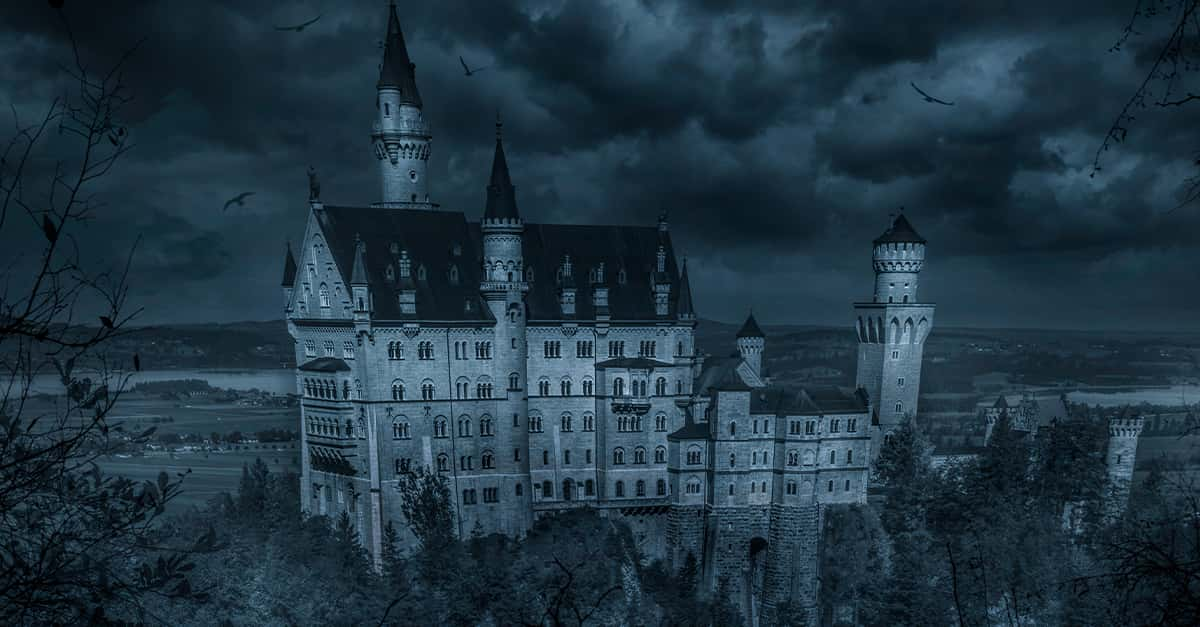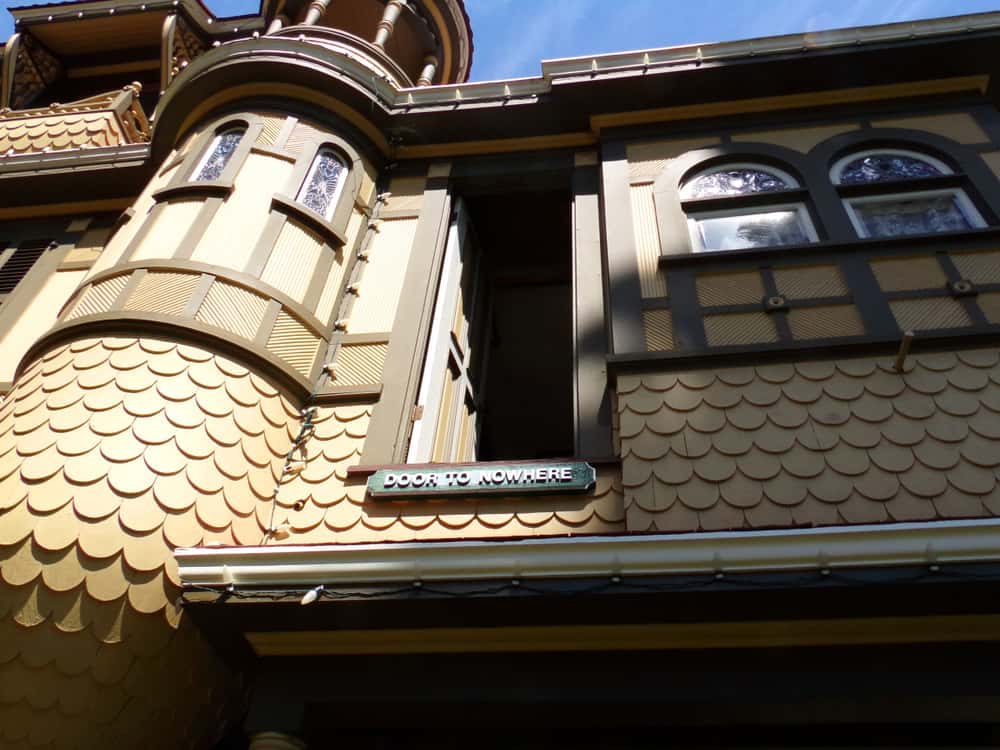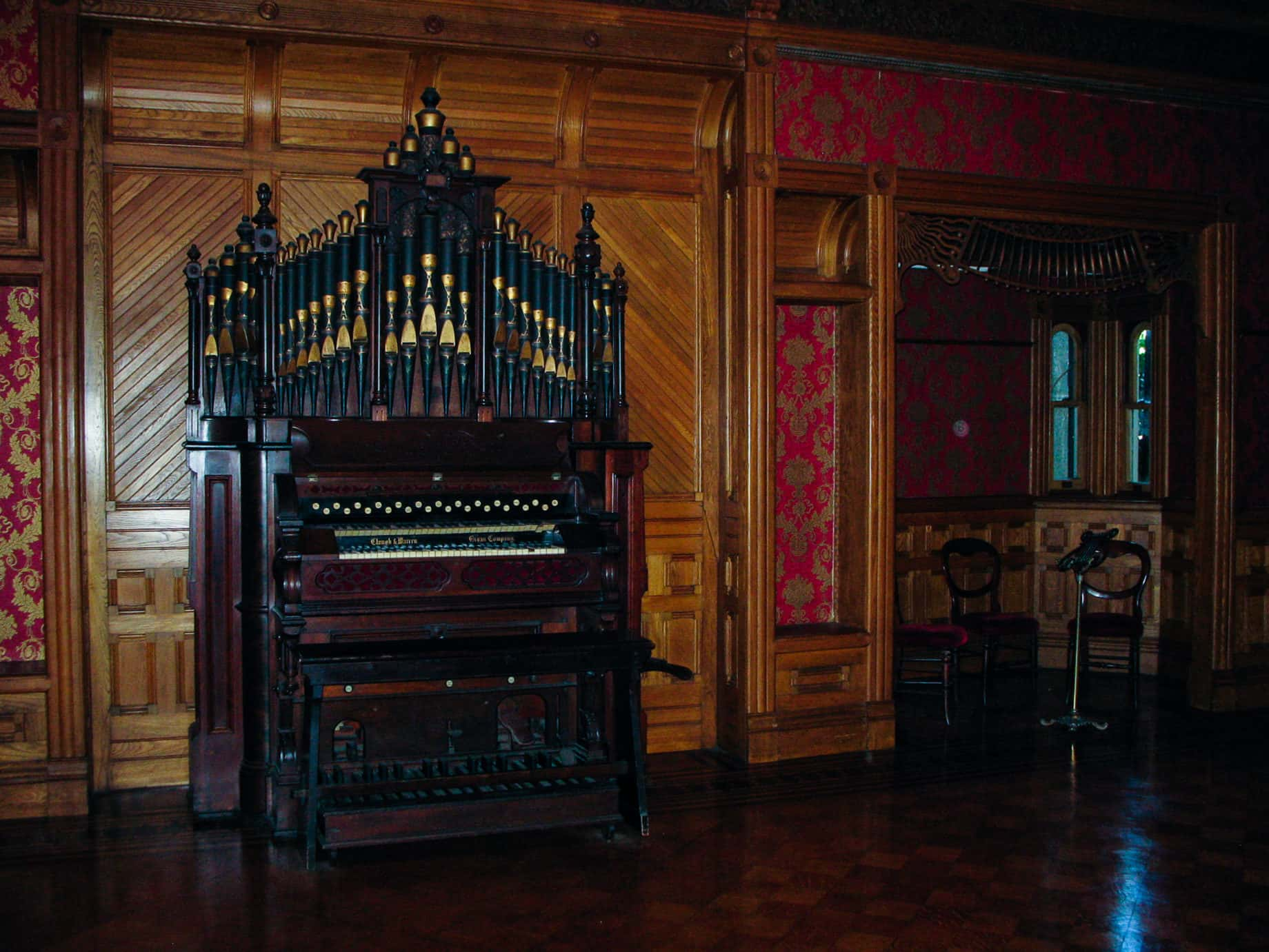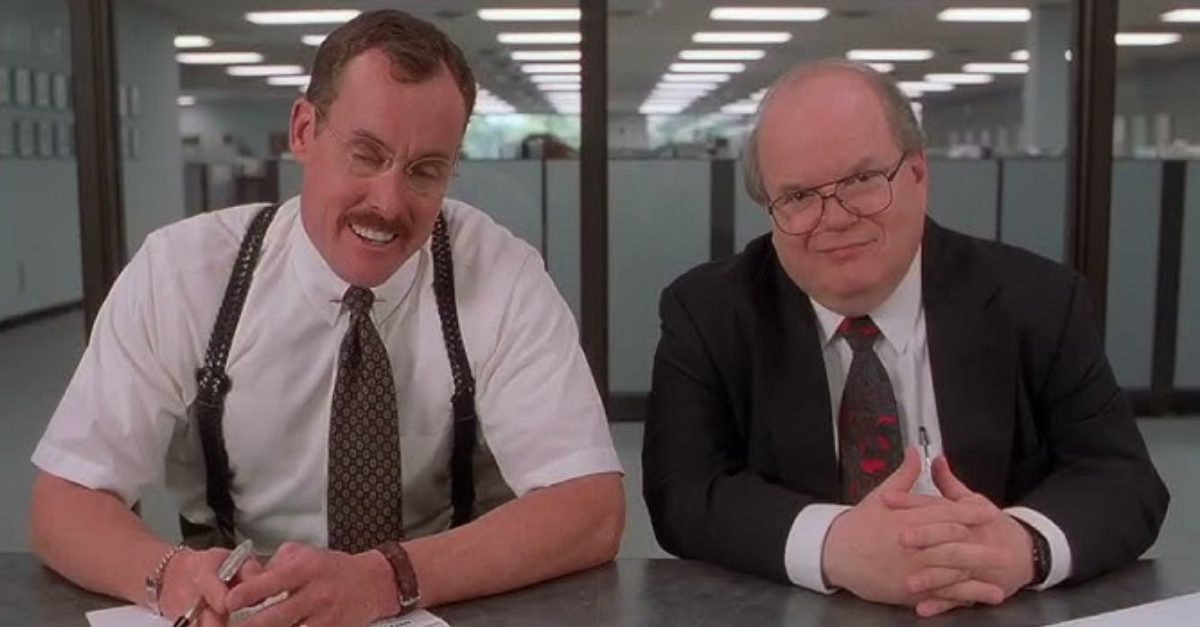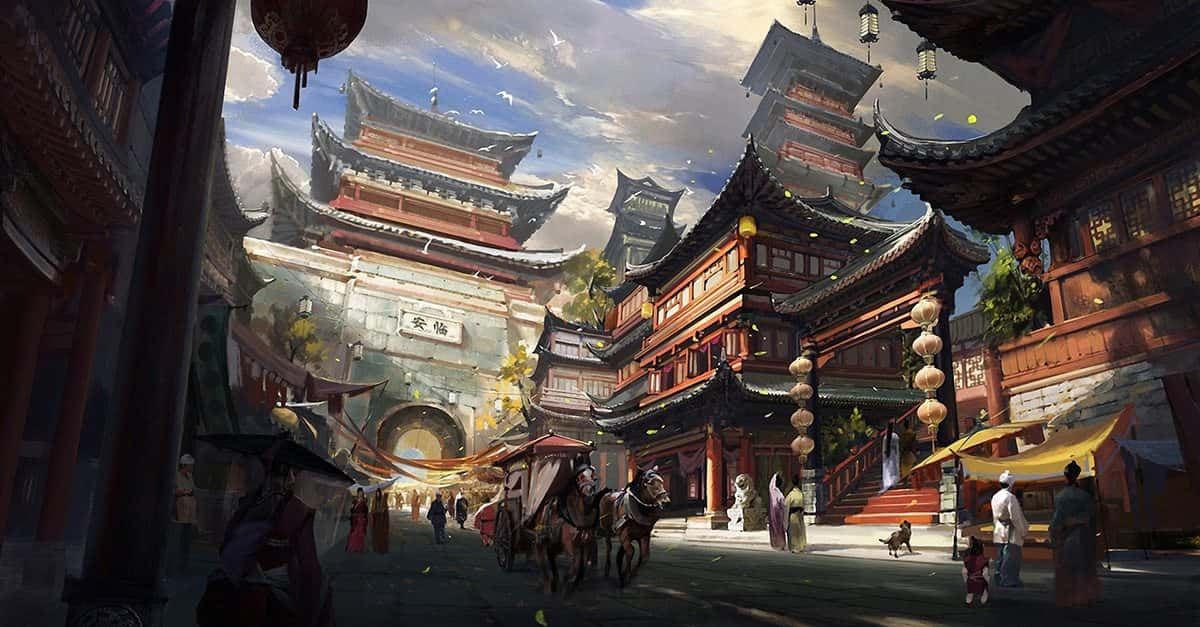Some people have too much money and too little sense, but these mansions, castles, and stately abodes take that maxim to a deranged level. Whether it’s a tragic love story, a secret obsession, or a paranoid urge, each and every one of these buildings built by the rich and reckless has a bizarre origin story. Open the door to these 42 chilling facts about the bizarre mansions owned by some of the most disturbed minds in history.
Creepy Mansions Facts
1. This Ain’t No Fairy Tale
Imagine you’re Mad King Ludwig II of Bavaria. You’re a recluse, a little unhinged, and you have tons of money at your disposal. Time to make an enormous fairy tale castle, right? Ludwig thought so, anyway. The beautiful, daunting Neuschwanstein Castle in Germany is his beloved brainchild—but it has a very dark history.

2. Theatre Kid
Ludwig was obsessed with the mythical operas of Richard Wagner and built the castle as a super weird shrine to the nationalistic composer. Accordingly, the king designed all the architecture and décor in a medieval style, as if he was a knight in his very own storybook. Then he took the whole thing up a big, creepy notch.
 Pixabay
Pixabay
3. Wink-Wink, Nudge-Nudge
Ludwig wrote to Wagner and dropped the not-so-subtle hint that he wanted Wagner to stay in the castle with him as a cherished friend. In his words, “You know the revered guest I would like to accommodate there.” Sadly, it was all doomed to a heartbreaking end. Wagner departed this life in 1883, and never actually visited Ludwig's monument to him.
4. Can You Say: Iconic?
Neuschwanstein’s romantic architecture inspired Disneyland’s famous Sleeping Beauty Castle.
5. Prince to a Pauper
The castle eventually became Ludwig’s ruin. In a good-guy king move, he only used his own personal funds to build the castle rather than draining Bavaria’s coffers. In an “Oh yeah, he has zero self-control” move, Ludwig spent almost every penny on the palace. Then, when his creditors tried to seize the castle, he threatened to take his own life.
6. Storming the Castle
In the end, Mad King Ludwig went down with his ship—er, castle. Frustrated with their king’s unhinged, irresponsible spending, the Bavarian government deposed him in the summer of 1886. In an ironic twist, he had only been living in his beloved castle for a mere 172 days when they came to take him into custody.
Ludwig tried desperately to stop it, even ordering guards to surround his castle to defend him, but it was no use. Then, the story took an even darker turn.
7. A Mystery for the Ages
A Bavarian official named Bernhard von Gudden and his men dragged Ludwig kicking and screaming from his palace on June 11, 1886, and secured him in the nearby Berg Castle. Surprisingly, merely two days later both von Gudden and Ludwig were no longer alive; they embarked on an evening stroll on June 13 and were never seen again. What happened? Well…
8. Happily Never After
When attendants found the men’s bodies, they were floating in the shallow waters of Berg Castle’s lake. To this day, no one knows how exactly they got there. They may have drowned, but this seems unlikely. Another, more disturbing theory suggests that enemies shot at Ludwig, with von Gudden getting caught in the crossfire.
Either way, it was a dark ending for the fairy-tale king.
9. #Winning With Winchester
Is there anything creepier than a haunted mansion? Well, if you’re the infamous Winchester Mystery House, yes. For a period, Sarah Winchester possessed everything: She was wedded to firearm tycoon William Winchester, she had a newborn child, and they had an enormous amount of money on the east coast of America. Then one day, it all came crashing down.
10. Riches to Miss
By 1881, Sarah's husband succumbed to tuberculosis, and her baby tragically weakened from the childhood illness marasmus. On the upside, she was now the sole owner of a fabulous fortune. Grieving, lost, and super-rich, Lady Winchester reportedly went to a medium for guidance—and got some strange advice that changed her life forever.
11. Seer Says
According to some sources, the clairvoyant told Sarah Winchester that she was actually…being haunted by all the victims of her husband’s rifles? No, really. Even more bizarrely, the medium told Winchester that she had to travel west and perpetually build a mansion to house both herself and the spirits who were haunting her.
Well, let me tell you, the house that Sarah built was one wild ride.
12. The House on Haunted Hill
For almost 38 years, Sarah continuously built up her mansion at 525 South Winchester Road with different rooms, hallways, staircases, stained-glass windows, alcoves, and the like. Construction was so frantic that inside the house, there are even stairs that go to nowhere and windows uselessly overlooking other rooms.
13. I Like to Move It Move It
Many people believe the mansion’s twisting insides were meant to keep the vengeful ghosts confused, and Winchester went to great lengths to defend herself. The whole house only had one working bathroom for Sarah herself; the rest acted as decoys to keep the ghosts off her scent. Sarah also insisted on sleeping in a different bedroom every night, living in fear that specters would finally catch up to her.
14. A Room of One’s Own
Winchester departed this life on September 5, 1922, with many parts of her desperate house still unfinished. To this day, there are rooms in the Winchester Mystery House that no member of the public has ever seen—and perhaps never will.
15. Let Me Slip Into Something More Comfortable
When burgeoning business tycoon and eccentric billionaire William Randolph Hearst inherited the humble plot of land in San Simeon where his family used to go glamping, he commissioned architect Julia Morgan to build “something a little more comfortable up on the hill." She certainly did. The result was today’s infamous Hearst Castle—and the stones have stories to tell.
16. A Den of Sin
William Randolph Hearst had originally intended the “humble” Hearst Castle abode as a family home for his wife Millicent and their sons, but he ended up using it for a much more scandalous purpose. By 1925, he and Millicent were married only in name, and Hearst took up with his long-time, notorious mistress, the actress Marion Davies.
Suddenly, Hearst Castle was the destination place for Hollywood. The illicit power couple hosted the likes of Cary Grant and Charlie Chaplin at their raucous parties.
17. Harder, Better, Faster, Bigger
Hearst Castle was under almost constant construction; even as Hearst and Davies hosted their famous parties, Julia Morgan was building ever more extensions, rooms, theatres, tennis courts, swimming pools, and guest houses.
18. The Great Accumulator
One art dealer called Hearst “The Great Accumulator,” and he more than lived up to the name. Even as a young boy, he was an obsessive collector, and Hearst Castle became his enormous display case. He bought antiques, textiles, you name it, all on a massive scale, and wanted to make Hearst Castle “a museum of the best things that I can secure.”
 Wikimedia Commons, B. M. Clinedinst
Wikimedia Commons, B. M. Clinedinst
19. The Hollywood Treatment
Hearst and his mighty castle were the focus of Orson Welles’ classic movie Citizen Kane. In the film, Hearst Castle is appropriately re-named “Xanadu.” Not everyone was a fan of the film, though: Hearst despised the portrayal and worked tirelessly to get the film banned from Hollywood.
20. American Royalty
Though Colorado is better known for its high mountains and deep forests, it also has its very own castle—and an eccentric mind to go with it. Bishop Castle, just off Highway 165, is named after its creator, Jim Bishop. Sure, it’s got all the strange rooms and medieval architecture you’d expect of a castle. But it also has a bizarre history.
21. A House of God-darn You
Jim Bishop was a blunt, loud, and tough-talking man who transformed a proposed cottage into a towering oddity. But when he and his wife were both diagnosed with cancer in 2014-15, his friend David Merrill committed the ultimate betrayal. After the Bishops made him a trustee of their house, Merrill went and turned it into...a church. Yep.
The outspoken Bishops were not pleased and spent the next few years both battling cancer and trying to get Merrill’s name off the lease.
22. The Latvian Lunatic
If you think Stonehenge is creepy, get a load of Coral Castle. At the turn of the century, infamous Latvian weirdo Edward Leedskalnin got rejected by his 16-year-old fiancée. Uh, the day before their wedding. Well, Eddie dealt with this like every other sane person would: He fled to America to lick his wounds—and then got really into occult construction.
23. Faith Healing
According to Leedskalnin himself, he contracted tuberculosis on the way over to America from Latvia but miraculously healed himself. How? Oh, just magnets. You know, the healing properties of magnets. Apparently inspired by this “miracle” to do great things, Leedskalnin started work on what we now know as Coral Castle…which is where things got very creepy very fast.
24. Do My Eyes Deceive Me?
Leedskalnin purchased land in the then-super remote Florida City, AKA the middle of nowhere. While working on the castle, he demanded to build it all with his own hands, by himself and refused to let anyone see his work. Reportedly, a group of teenagers once managed to sneak in to take a peek—and what they saw made their blood run cold.
According to their eyewitness accounts, Leedskalnin somehow got the blocks of coral he was building with to float.
25. What, This Old Thing?
Though many people asked, Leedskalnin never told anyone how he had built the castle by himself. He only admitted to using a “perpetual motion holder,” which is no help at all—no offense, Ed. Sometimes when visitors pressed him to reveal his construction secrets, he apparently only shrugged and said, “It’s not difficult if you know how.”
26. Location, Location, Location
True to his weirdo roots, Leedskalnin actually once moved the whole castle—yep, the whole thing—from Florida City to near Miami. He was apparently fed up with people trying to sneak in and find out his secrets, so he picked up and moved the whole kit and caboodle in order to protect his well-guarded, occult methods.
27. Chez Ed’s
Leedskalnin called his original structure in Florida City “Ed’s Place,” a shockingly original and innovative name that might give you some sense of exactly who it is we’re dealing with here. Moreover, though we now call the final structure Coral Castle, Leedskalnin originally named the second location “Rock’s Gate.”
28. Ex Hex
Whenever anyone asked Leedskalnin why he had decided to so suddenly build this castle, he’d always enigmatically respond that it was for his “Sweet Sixteen.” Though many experts now believe this was a reference to his teenaged ex-fiancée and his unrequited love for her, no one ever figured out the truth for sure.
29. A Family Affair
The Waldorf Astoria in New York. Just those words conjure luxury, elegance, and more money than you can shake a fist at. But underneath the hotel’s gilded exterior lies a dark, dirty history. The original Waldorf-Astoria was actually two separate hotels: The Waldorf and the Astoria—and they came out of a bitter family feud.
30. Not-So Sweet Caroline
In the late 19th century, fancypants realtor William Waldorf Astor had an old mansion just lying around on Fifth Avenue and 33rd street in Manhattan, so he decided to construct a hotel instead. Why exactly did he choose to build a hotel? Petty revenge, of course. He was ticked with his aunt Caroline Astor, who just so happened to own the mansion next to his.
What better payback than ruining her morning view with a big honking hotel? Of course, once he actually built The Waldorf, things got even more interesting…
31. There Goes the Neighborhood
Hilariously, when The Waldorf Hotel first opened, high society New Yorkers absolutely despised it and actively laughed at it. Dyed-in-the-wool Manhattanites thought the tacky behemoth really brought down the neighborhood, and its excessive number of bathrooms earned it the scornful nickname “Astor’s Folly.” Um, obviously, this opinion did not prevail.
32. That’s Mrs. Astor to YOU
The specifics of William’s feud with Aunt Caroline are straight out of the “spoiled rich kids” playbook. Waldorf’s wife Mary and his Auntie Caroline were actually locked in a battle of wills about who could use the illustrious title of “Mrs. Astor” in high society. Seriously, that’s it. You know you love me, XOXO, 19th-century Gossip Girl.
33. Seeing Double
The Waldorf launched its elegant entrance in March 1893 and eventually became the star of New York Society—until Waldorf’s cousin and rival John Jacob Astor IV cheekily said "watch this, cuz," and began his endeavor to construct his own Astoria hotel…right next door. Naturally, this hotel was even bigger, with more rooms and an even more ornate ballroom.
Luckily, the family worked out their differences and soon made provisions to create the conjoined Waldorf-Astoria of today. Aw, I love it when families get along.
34. Vlad to the Bone
These days, the terrifying Vlad the Impaler—AKA the supposed inspiration for Dracula—is synonymous with blood, terror, and…you know, impaling tons of people on stakes. But try being alive while he was still around. While re-building his Poenari Castle in Romania, Vlad supposedly forced women and children to take part in the construction or else face execution.
35. Golden Boy
Maybe on the surface, the Sun King Louis XIV seems stable, what with his long reign and fancy name. But don’t be fooled: When it comes to Louis, all that glitters is gonzo. This megalomaniacal king not only put more and more power into his own hands, he also turned the Palace of Versailles from a hunting lodge into an architectural spectacle that would make even Liberace say, “Whoa, too much, dude.”
36. Don’t Stop and Smell the Roses
The gardens of Versailles are world-famous, but in its heyday as a royal residence, the palace blooms smelled so strongly, they apparently made guests sick to their stomach.
37. Mirror, Mirror
When Louis XIV built the exquisite Hall of Mirrors at Versailles, he had to tempt away Venetian glassmakers—a move that greatly angered Venice, who wanted to have a monopoly on glassmaking. In a disturbing bid to keep their secrets, the Venetian government actively spied on their workers and threatened them with bodily harm if they ever spilled the beans to outsiders.
38. Cold Comfort
The main dining hall in Versailles was so enormous that during big dinners, the servants couldn’t even walk from the kitchen to King Louis XIV’s seat without his food getting cold.
39. Holmes on Homes
Notorious killer and con artist H.H. Holmes had something of an entrepreneurial streak in him. When he established his hunting grounds during the preparations for the 1893 World's Fair in Chicago, Holmes began constructing the unassuming dwelling we recognize today as "The Castle of Horrors." Regrettably, the building is even more terrifying than its name suggests.
40. Uh, Oops?
Holmes bought the lot for his dark venture in 1887 and claimed he wanted to use it as a hotel for the upcoming Fair. He swiftly engaged numerous builders and developers, solely to appropriate their materials for his own "use," and then asserted that he had mistakenly misplaced them. That way, no one knew what was going on in the building…until 1894, when investigators searched it and found a house of horrors.
41. A Beast Unleashed
The true extent of Holmes’ villainy was immediately evident once people got a look at his macabre castle. He had soundproofed rooms, labyrinthine hallways, and false walls leading to secret passageways. Those early investigators were utterly shocked at what they had uncovered—but it got so much worse than that.
42. The Rooms of Special Purpose
Among the most chilling features of H.H. Holmes’ crowning “glory” were chutes that plummeted down to a basement filled with vats of acid and airtight rooms into which he could pump noxious gas. Need I say what he actually did with these rooms? To this day, no one knows how many of his victims perished within the castle’s walls.

